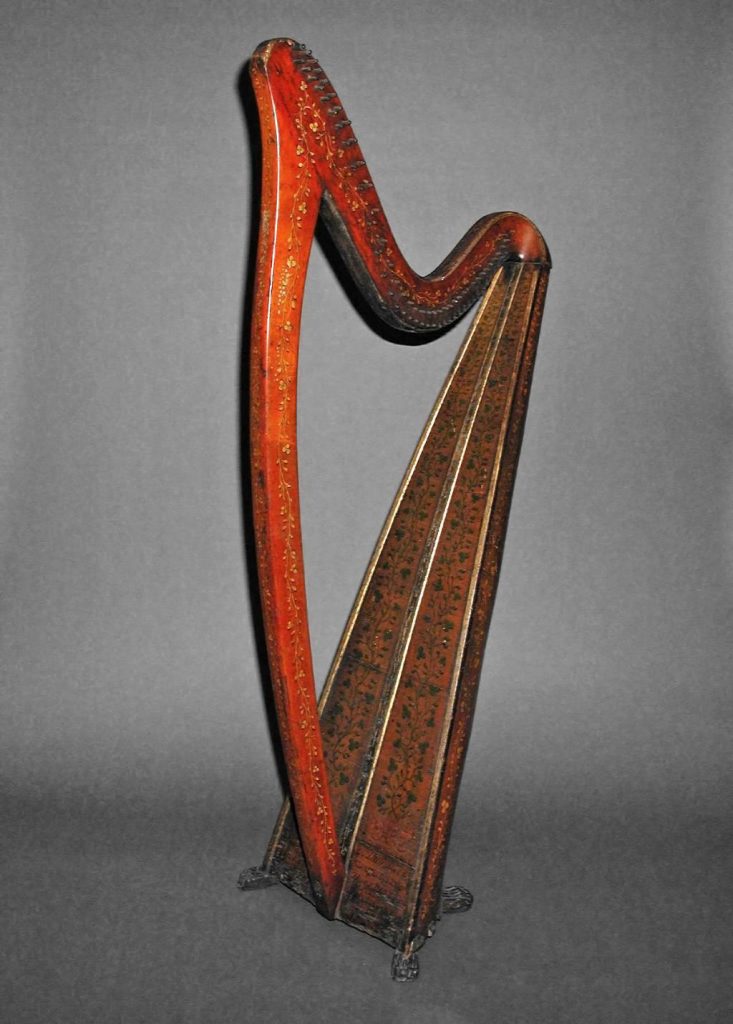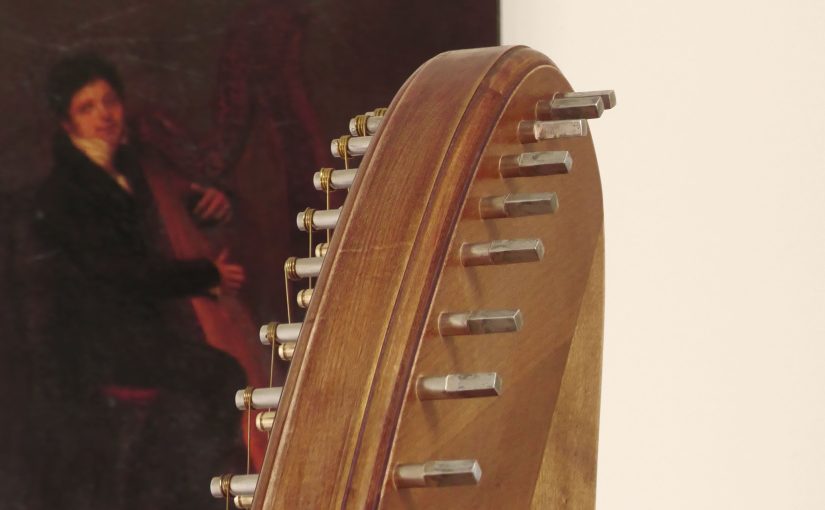Thomas Williamson was learning to play the traditional wire-strung Irish harp in 1826. This post is to try and say something about him.
I think we have only one single reference to Thomas Williamson. The reference is the minutes of a meeting of the Gentlemen of the management committee of the Belfast harp school. We don’t have their original minute book, but the minutes of some meetings were excerpted in a pamphlet titled Irish Harp Society which was printed in Calcutta for the Gentlemen in India who were bankrolling the Belfast harp school. You can see the entire pamphlet online at Penn Libraries.
The meeting was held in Belfast (presumably at the Harp Society House on Cromac Street) on Thursday 24th August 1826. The treasurer presented the accounts, which are very interesting since they include payment for harps as well as for running the house. After that, the teacher, Valentine Rennie, presented his report on the five boarding pupils currently living and studying at the school: Alex Jack, Martin Crenny, Arthur Morgan, John McMullan, and Matthew Wall; and four other day pupils who are not named.
Then after that, the meeting was presented with a list of six former pupils “gaining their bread throughout the kingdom; Harp being given to them by the Society”, i.e. that these six had been given a gift harp by the Gentlemen of the Irish Harp Society when they had completed their education, and were by now already out working as professional musicians.
Next on the agenda is a series of three resolutions, to do with admitting new pupils. One is about Michael McClosky; one is about Thomas Brown; and one is about Thomas Williamson:
Ordered – That Thomas Williamson, a blind boy, twelve years old, recommended by Robert Williamson, Esq. be placed on the books at the first vacancy, and in the meantime he is to attend the Society house and receive instructions in the school.
Minutes of meeting, Thur 24 Aug 1826, printed in Irish Harp Society Calcutta 1828 (Penn Libraries ML1015.C3I7) p.44
We can pick apart every little bit of this statement, to see what we can work out about our man Thomas Williamson.
It seems as though every candidate to be admitted to the harp school needed a Gentlemen to give them a reference. The Gentleman who recommended Thomas Williamson was Robert Williamson. I think that this is Robert Williamson, who died 27 June 1826; his father was John Williamson of Lambeg who was an important person in the Linen trade in Ulster. Robert’s obituary says that “His love of music, and particularly of the plaintive airs of his native land, induced him to continue, almost till the close of his career, the principal director of “The Belfast Irish Harp Society;” supported mainly by generous Irishmen in India, through the instrumentality of his early, excellent, and patriotic friend, the late JOHN WILLIAMSON FULTON.” (Belfast Newsletter, Fri 8 Jul 1836 p4). Robert Williamson had an Irish harp in his house (Belfast Commercial Chronicle, Mon 10 Oc 1836 p3). But this does not tell us how our man Thomas Williamson was connected into this gentlemanly world. I don’t think we can even presume that Thomas Williamson may have been from near Lisburn, since some of the other Gentlemanly references we have are not from the same place as the student they are recommending. I don’t at present really understand how this system of finding a Gentleman to make a recommendation really worked.
We are told that Thomas Williamson was blind, and that he was twelve years old. If he was aged 12 at the end of August 1826, he must have been born between September 1813 and August 1814. I think twelve would be a typical age for a boy to be admitted to the harp school to start his full-time vocational training to be a professional harper.
We are told that Thomas Williamson was to be taken in as a boarding pupil, living in the house in Cromac Street. But this would not happen until “the first vacancy”, i.e. when one of the five current boarding pupils finished their education, and was discharged from the school with their gift harp and certificate. Until then, Thomas Williamson was to “attend the Society house and receive instructions in the school”, i.e. he was to be a full time day pupil. This means he must have been living in Belfast, near enough to the school to walk in every day. but he would also have to be supported by someone because I don’t think the Harp Society would pay for his private board and lodgings. The Society only provided board and lodgings to the boarding pupils.

So what happened after that? The next minutes we have are just a fragment of the minutes of the meeting of Thursday 17th Jun 1830, when the Gentlemen agreed to discharge Matthew Wall, and give him a harp so that he could emigrate to Canada (Belfast Newsletter Tuesday 22 June 1830 p3). None of the other pupils current or past are mentioned, so we don’t know if Thomas Williamson was still studying alongside Matt Wall at that point (Wall was already a boarding pupil back when Thomas Williamson was admitted).
And after that we have almost nothing about the running of the Society or the harp school.
I also have not found any references to Thomas Williamson working as a professional Irish harper. Maybe in due course some new information will turn up.


One thought on “Thomas Williamson”